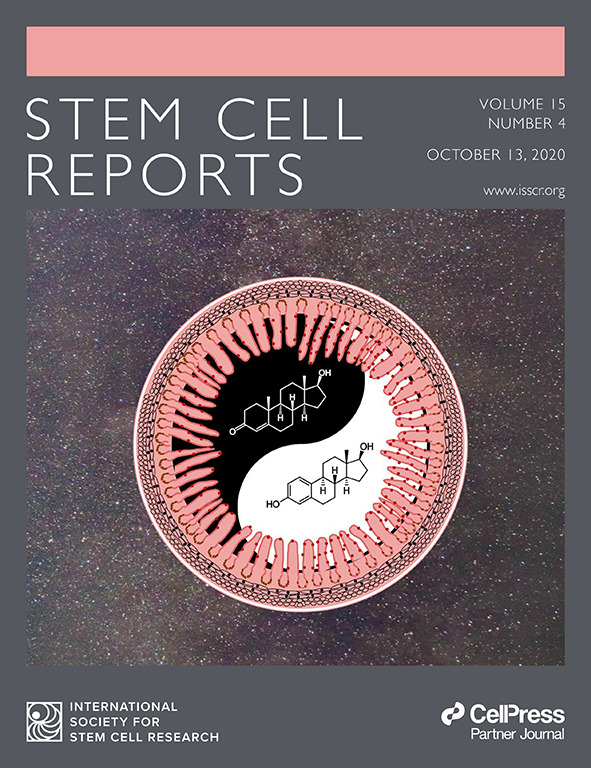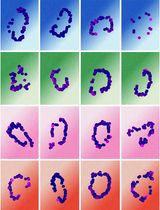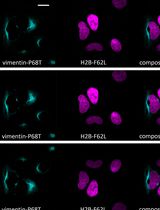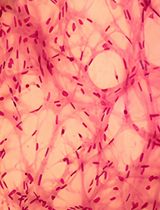- EN - English
- CN - 中文
Whole-mount Staining of Mouse Diaphragm Neuromuscular Junctions
小鼠膈肌神经肌肉接头的整体染色
(*contributed equally to this work) 发布: 2021年11月05日第11卷第21期 DOI: 10.21769/BioProtoc.4215 浏览次数: 4395
评审: Giusy TornilloKae-Jiun ChangVictor Steven Van LaarAnonymous reviewer(s)
Abstract
The neuromuscular junction (NMJ) is a specialized synapse that connects the terminal end of a motor neuron and a skeletal muscle fiber. Defects in NMJ cause abnormalities of neuromuscular transmission, leading to NMJ disorders. The mammalian diaphragm muscle is essential for respiration and has been widely used to study NMJ formation. Here, we provide a simple and straightforward protocol for preparing diaphragms from embryonic, neonatal, and adult mice and for subsequent NMJ staining.
Keywords: Whole-mount staining (全胚胎染色)Background
The mammalian diaphragm separates the thoracic cavity from the abdominal cavity. It is composed of two parts: the costal and crural diaphragm segments (Merrell and Kardon, 2013). neuromuscular junction (NMJ) is a specialized structure on the diaphragm, consisting of presynaptic nerve terminals and postsynaptic muscle membranes (Li et al., 2018). With the development of the mouse embryos, NMJ gradually gathers in the middle area of the diaphragm myofibers. In adult mice, each contractile diaphragm myofiber is precisely dominated by a motor neuron terminal at the middle region (Liu and Chakkalakal, 2018). When motoneuron terminals release acetylcholine (ACh), the latter activates its receptors (AChRs) located on muscle fibers and causes muscle contraction (Li et al., 2018). Defects in the development and maintenance of NMJ can lead to a variety of neuromuscular diseases (Arimura et al., 2014). Because of the particularity of its structure, diaphragms are frequently used to study NMJ formation. The embryonic and neonatal mouse diaphragms are thin and easy to stain. However, adult diaphragms become thicker and are covered with connective tissues, and are difficult for immunostaining. In this article, we provide a simple and detailed protocol that can be used for the isolation of diaphragms from embryonic, neonatal, and adult mice, and for diaphragm NMJ staining.
Materials and Reagents
60 mm tissue culture dish (Shanghai Sunub Bio-Tech Development Inc, catalog number: TCD-60)
15 ml centrifuge tube (Corning Incorporated-Life Sciences, catalog number: 430791)
50 ml centrifuge tube (Corning Incorporated-Life Sciences, catalog number: 430829)
12-well culture cluster (Corning Incorporated-Life Sciences, catalog number: CLS3512-100EA)
25 × 75 mm adhesion microscope slides (CITOTEST, CITOTEST®, catalog number: 188105)
24 × 50 mm microscope cover glass (Titan, catalog number: 02036401)
Foam board (15 × 10 × 4 cm)
Needles (Shanghai Kindly Group, description: 0.45 mm × 16 mm RW LB)
Aluminum foil (Top group, Miaojie, catalog number: MF50)
Black incubator box (Haimen Tech Experiment equipment, catalog number: G1050)
Mice: Mice strain: C57BL/6J
Mouse embryos (at embryonic days, E16.5)
Neonatal pups (at the postnatal day 1, P1)
Adult mice (2-month-old, 2M)
Triton X-100 (Shanghai Shisheng Sibas Technology Development Co.,Ltd, catalog number: H2Q0212)
Na2HPO4·12H2O (Shanghai Experiment Reagent Co.,Ltd, catalog number: 174710)
KH2PO4 (Shanghai Experiment Reagent Co.,Ltd, catalog number: 168130)
NaCl (Sinopharm Chemical Reagent Co.,Ltd, catalog number: 10019318)
KCl (Sinopharm Chemical Reagent Co.,Ltd, catalog number: 10016318)
Liquid blocker super pap pen (Daido Sangyo Co.,Ltd, catalog number: Daido-Sangyo.SBM05480)
Normal goat serum (Jackson ImmunoResearch Laboratories Inc., catalog number: 005-000-121)
Primary antibody anti-synaptophysin (rabbit) (Thermo Fisher Scientific, catalog number: PA1-1043)
α-Bungarotoxin-ATTO Fluor-488 (Alomone Labs, catalog number: B-100-AG)
Secondary antibody Alexa FluorTM 546 goat anti-rabbit IgG (Thermo Fisher Scientific, catalog number: A-11035)
FluoromountTM Aqueous Mounting Medium (Sigma-Aldrich, catalog number: F4680-25ML)
10× PBS (see Recipes)
4% paraformaldehyde (PFA) (see Recipes)
0.5% Triton X-100 in PBS (see Recipes)
0.1 M glycine (see Recipes)
Blocking solution (see Recipes)
Primary antibody solution (see Recipes)
Secondary antibody solution (see Recipes)
Equipment
Curved tip eye forceps (Shanghai Shisheng Sibas Technology Development Co.,Ltd, catalog number: D020102)
Ophthalmic scissors (Shanghai Shisheng Sibas Technology Development Co.,Ltd, catalog number: D010101)
Straight forceps (Shanghai Shisheng Sibas Technology Development Co.,Ltd, catalog number: 433050)
Arrow forceps (Shanghai Shisheng Sibas Technology Development Co.,Ltd, catalog number: 433051)
Zeiss Confocal Laser-scanning Microscope (Zeiss, model: LSM880NLO FLIM)
Software
Procedure
文章信息
版权信息
© 2021 The Authors; exclusive licensee Bio-protocol LLC.
如何引用
Sha, R., Wang, Z., You, X., Liu, Y., Xie, Z. and Feng, Y. (2021). Whole-mount Staining of Mouse Diaphragm Neuromuscular Junctions. Bio-protocol 11(21): e4215. DOI: 10.21769/BioProtoc.4215.
分类
神经科学 > 感觉和运动系统 > 动物模型
干细胞 > 成体干细胞 > 肌肉干细胞
细胞生物学 > 细胞成像 > 荧光
您对这篇实验方法有问题吗?
在此处发布您的问题,我们将邀请本文作者来回答。同时,我们会将您的问题发布到Bio-protocol Exchange,以便寻求社区成员的帮助。
提问指南
+ 问题描述
写下详细的问题描述,包括所有有助于他人回答您问题的信息(例如实验过程、条件和相关图像等)。
Share
Bluesky
X
Copy link












